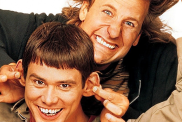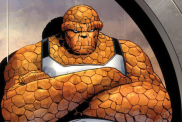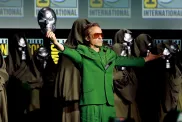The most expensive film ever made at the time of its release at a whopping $175 million, Waterworld has thrilled audiences through the years with its awe-inspiring action scenes, gargantuan maritime sets and ground-breaking special effects. With Arrow Video‘s new Blu-ray box set now available, we poured over the disc’s special features and put together a list of 18 Things We Learned From the New Waterworld Blu-ray. Check out the list in the gallery below!
Click here to order Waterworld on Blu-ray!
A definitive post-apocalypse blockbuster, Waterworld stars Kevin Costner (The Untouchables) as The Mariner – a mutant trader, adrift in a dystopian future where Earth is submerged under water and humankind struggles to survive on boats and in ramshackle floating cities. The Mariner becomes embroiled with the Smokers, a gang of pirates who, led by villainous leader Deacon (Dennis Hopper, Blue Velvet), are seeking Enola (Tina Majorino, Napoleon Dynamite), a girl with a map to the mythical realm of Dryland tattooed on her back.
Famous for both its epic scale and the controversy that swirled around its production, Waterworld is a key cult film of the 1990s, and an essential entry into the subgenre of ecologically-minded blockbusters. Presented in an exclusive new restoration, in three different cuts, and with a wealth of extra material, this high-water mark of high-concept Hollywood can now be enjoyed as never before.
RELATED: January 29 Blu-ray, Digital and DVD Releases
TWO-DISC LIMITED EDITION CONTENTS
New restoration from a 4K scan of the original negative by Arrow Films, presenting the film in three cuts
Original 5.1 DTS-HD Master Audio and 2.0 stereo audio options
Optional English subtitles for the deaf and hard of hearing
Six collector s postcards
Double-sided fold-out poster
Limited edition 60-page perfect-bound book featuring new writing on the film by David J. Moore and Daniel Griffith, archival articles and original reviews
Reversible sleeve featuring original and newly commissioned artwork by Paul Shipper
DISC ONE THE THEATRICAL CUT
High Definition Blu-ray (1080p) presentation of the original theatrical cut
Maelstrom: The Odyssey of Waterworld, an all-new, feature-length making-of documentary including extensive cast and crew interviews and behind the scenes footage
Original archival featurette capturing the film’s production
Global Warnings, film critic Glenn Kenny explores the subgenre of ecologically aware Hollywood blockbusters
Production and promotional stills gallery
Visual effects stills gallery
Original trailers and TV spots
DISC TWO THE EXTENDED CUTS [LIMTED EDITION EXCLUSIVE]
High Definition Blu-ray (1080p) presentation of the extended US TV cut, which runs over 40 minutes longer than the theatrical cut
High Definition Blu-ray (1080p) presentation of the extended European Ulysses cut, which includes censored shots and dialogue
18 Things We Learned From the New Waterworld Blu-ray
-
George Miller visited the set.

Everyone involved with Waterworld from its inception admits it was always intended as a Mad Max riff, even hiring cinematographer Dean Semler (The Road Warrior, Mad Max Beyond Thunderdome) to shoot it. At one point early in production Semler invited his friend and Mad Max creator George Miller to the set. Miller admitted that, yes, it was indeed a lot like The Road Warrior on water.
-
It was originally a low-budget film.

Screenwriter Peter Rader, who cut his teeth on direct-to-video schlock like Hired to Kill and Grandmother's House, originally pitched the concept of Waterworld as a low budget Mad Max ripoff to shoot in South Africa. Producer Brad Krevoy rejected the pitch, hilariously predicting, "Are you out of your mind? A movie like that is gonna cost $5 million dollars!"
-
The Mariner drinking his own pee was always there.
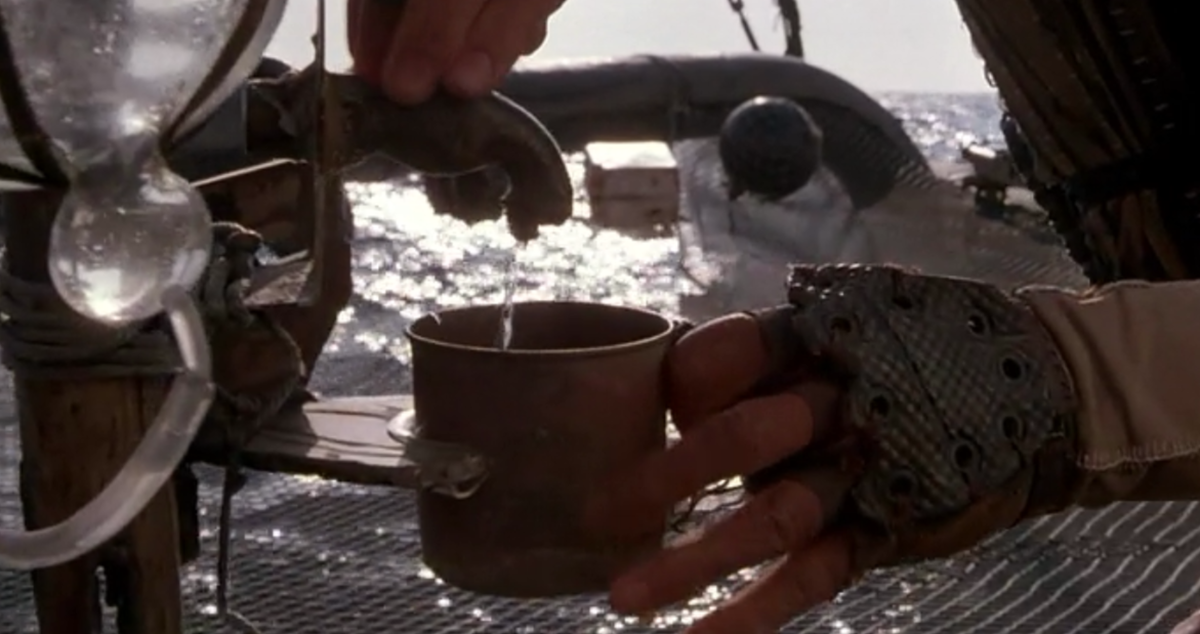
Rader needed to show that even though water was everywhere humans could not drink it, hence the concept of The Mariner filtering his own pee, which famously made it to the final film. However, the original filtration system in Rader's draft was much gorier, involving a living kidney with valves attached to it!
-
The villain was originally called Neptune.
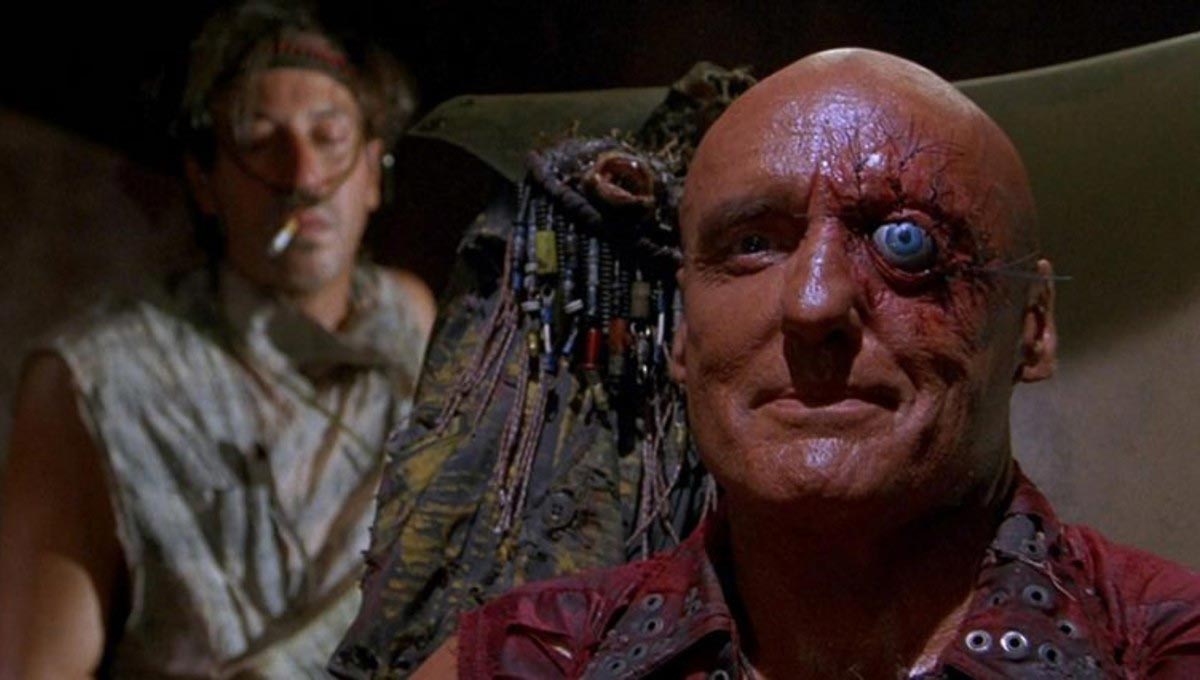
The bad guy played by Dennis Hopper in the film is called The Deacon, but originally he was written as a pirate warlord named Neptune. The character is described as far more theatrical than it became, with Neptune brandishing a full-on trident, a flowing cape, a long pointy beard and a breastplate made out of a turtle shell. His henchmen had mutations like crab claws, much like Davy Jones' men in the Pirates of the Caribbean films a decade later.
-
Nils Gaup was the original director.

Once the project landed with producers Lawrence and Charles Gordon at their company Largo, the initial idea was to do the movie for around $60 million with Norwegian director Nils Gaup of Disney's 1990 version of Shipwrecked. Once Kevin Costner came aboard he demanded that his Robin Hood: Prince of Thieves director Kevin Reynolds helm the film, and the estimated budget ballooned to $100 million, necessitating Universal's involvement.
-
Kevin Costner and Kevin Reynolds needed mediation.

When Reynolds first met about doing the movie and found out Costner was attached, he told them, "Not interested." Reynolds had known Costner since film school and had cast him in his first movie Fandango, but their experience on Prince of Thieves was contentious. Charles Gordon flew Reynolds to Lake Tahoe where Costner was filming The Bodyguard and sequestered the two men in a hotel room until they worked out their differences. They still had to wait for Costner to shoot Wyatt Earp, so in the interim Reynolds directed Rapa Nui, which Costner produced.
-
They needed to build an airport runway.

In order to accommodate the needs of the massive production in their chosen Hawaiian shooting location, the film needed to build a quarter-mile extension to the runway at Kona International Airport. The cost came to $11 million in order to land the 747s containing Waterworld's cast, crew and sets.
-
Filming was behind on the first shot.

Much of the expensive delays due to the complexities of shooting on water were evident in the very first shot of production. When The Mariner's trimaran vessel first entered the gates massive atoll set, a cable broke and the divers couldn't tow the boat in. This initial mishap, the first of many, cost the production three hours. "I knew then, this isn't any ordinary movie," said Charles Gordon.
-
The trimaran cost the most time.

Despite many of the film's enormous and complicated sets built on water, filming The Mariner's trimaran out at sea surprisingly proved the most time consuming and costly. In order to capture the ship with at least 270 degrees of ocean around it they had to film at least 2-miles off the coast of Hawaii. This necessitated a virtual flotilla of support ships, including a picture boat, camera boat, make-up boat, catering boat, etc. Plus every time they needed to switch angles from, say, Costner to Jeanne Tripplehorn, they had to move the whole boat. They were only averaging five or six setups per-day.
-
Kevin Costner's divorce influenced his character.

Kevin Reynolds says that he believes Costner's harsh portrayal of The Mariner had a lot to do with what was happening in the actor's personal life at the time. "He was in some difficulty," Reynolds admits. "He was going through a divorce. I think that had an effect on his character, the way he came off in the picture."
-
Rumors

Although shooting on the water did cause massive delays, rumors generated in the press at the time painted a far grimmer picture of what was happening than the reality. These false rumors included that the entire atoll set had sunk, and that two cameramen had died during shooting. Many of these rumors were spurred when production denied journalists access to the film during shooting.
-
Jack Black is in this movie.

In one of his earliest film roles, comedy superstar Jack Black portrayed the soot-faced Smoker airplane pilot who attacks The Mariner only to get his plane caught on the trimarand's mast. He's only in a few scene and is barely recognizable due to the heavy amount of dirt make-up he wears.
-
A lot of the Deacon's dialogue was by Joss Whedon.

Joss Whedon has spoken out publically about the bad time he had doing rewrites on Waterworld, describing himself as the world's highest-paid stenographer and having to essentially do Costner's bidding. However, on the new disc Charles Gordon says that Whedon did contribute most of The Deacon's dialogue in the third act. The entire third act was heavily rewritten during production when no one could agree on a satisfying finale.
-
The Exxon Valdez set was built in a parking lot.

Having already face the hardships and costs of shooting on water, the production decided to shoot its big climax on the Smokers' Exxon Valdez in a set built amid a parking lot in LA's City of Industry. The controversial decision to expressly say that the villain ship was the infamous wrecked oil tanker wasn't made until the last minute when they allowed model makers to paint the name on the back of the miniature boat they sunk.
-
The movie pioneered CG water before Titanic.

In order to create the illusion that the set built in the parking lot was on water, Digital Domain pioneered the use of digital ocean a full two years before the groundbreaking work on Titanic.
-
Kevin Reynolds did the big explosion stunt himself
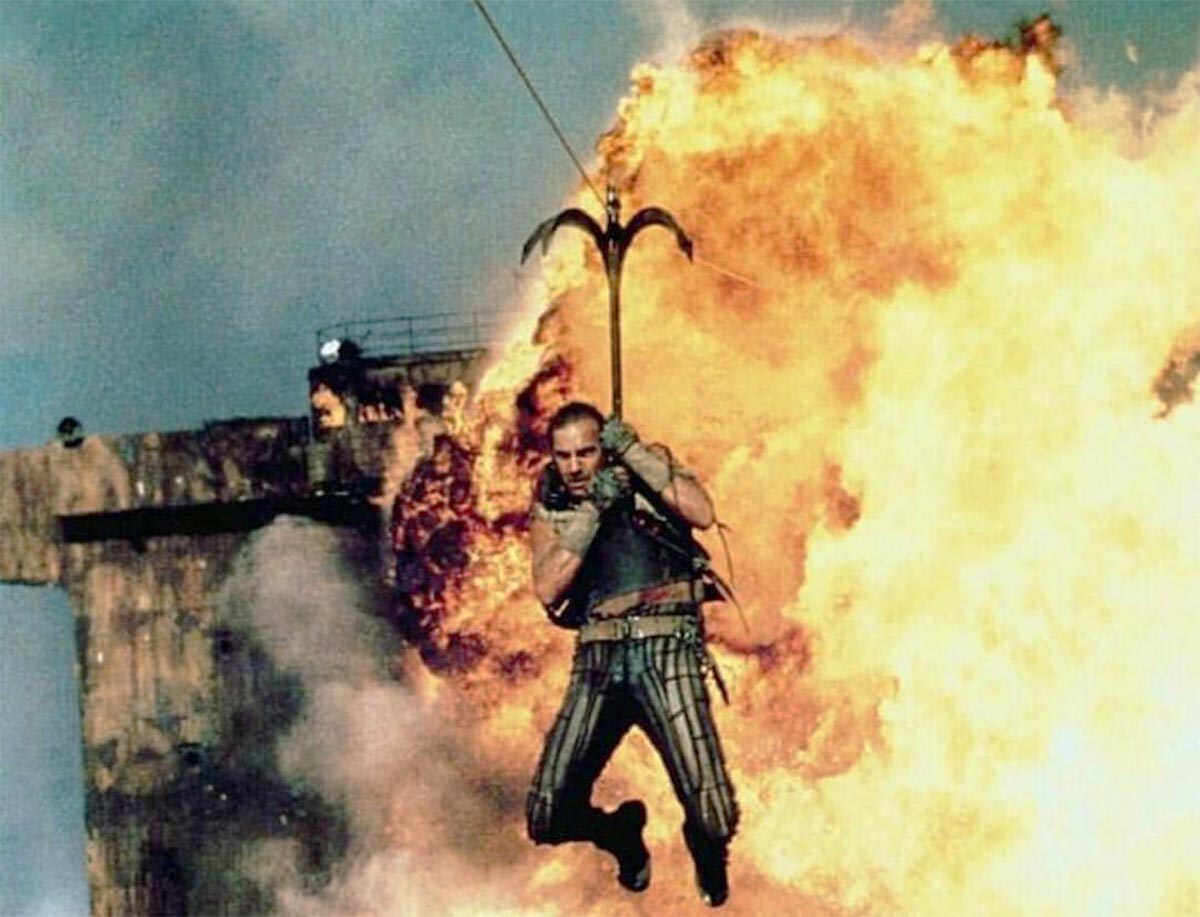
One of the major stunts in the film is when Kevin Costner shoots down a wire using a hook as a massive explosion erupts behind him. At first production would not allow Costner to do the stunt, fearing for the actor's life. To demonstrate that it was perfectly safe for Costner, Reynolds performed the stunt himself.
-
Kevin Reynolds walked off the movie.

During post production director Kevin Reynolds delivered his first cut, which was much darker and contained more environmental themes than the producers cared for. Unwilling to compromise his vision but wanting the studio to get a commercial film for their investment, Reynolds walked away from the film, turning editing over to Kevin Costner himself. The final version scrapped Mark Isham's dark score and emphasized the heroic Errol Flynn feeling of The Mariner's adventure. Reynolds' favorite scene (which he describes as the Planet of the Apes moment), where it's revealed at the end that the dry land is the top of Mount Everest, was shot but deleted from the theatrical version.
-
The Waterworld stunt show at Universal is still going!

Originally opening at the same time as the film in 1995, Waterworld: A Live Sea War Spectacular is a live stunt show featuring the Atollers being attacked by Smokers. It is still active to this day at Universal Studios Hollywood, Universal Studios Japan, and Universal Studios Singapore.

